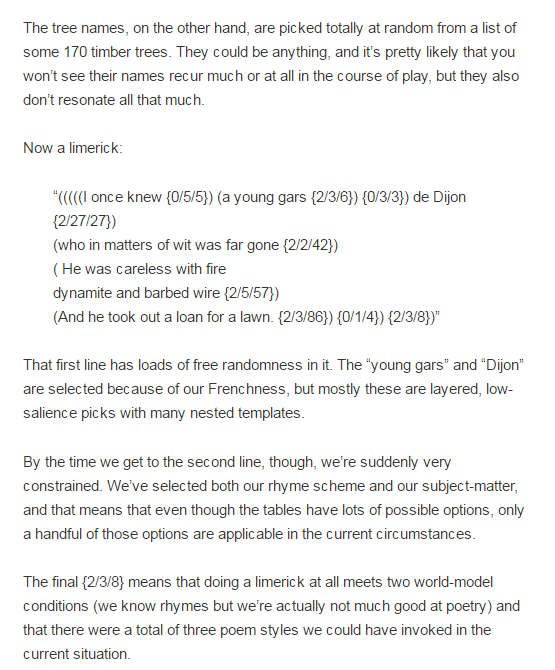

Visualizing Procgen Text
Emily Short, dame of interactive fiction, has been blogging about the design process behind The Mary Jane of Tomorrow, specifically the visualization of the procedurally-generated text.
While visualization is very useful in development, I’d argue that it is especially important for generative projects. If you’re trying to design a system that will surprise you, then being able to hold it all in your head and imagine all of the possible outcomes isn’t necessarily a benefit. Tests, visualization, and other tools can help build more complex systems.
In two articles, Emily Short looks at figuring out what to visualize and how to display it. It’s always useful to read someone else’s development experience, particularly when the writer is experienced at authoring interactive text. To pluck out one example, she talks about some kinds of additions that make the reader’s experience worse. That’s a lesson many of us had to learn the hard way.
She has another recent post that’s also worth mentioning, discussing how to deal with the bowls-of-oatmeal problem. Connecting the generator to something mechanical; the creation of low-level, layered feedback; and the use of procedural text to respond expressively to the context and relationships where it’s used.
Most importantly, she points out that procedural generation “isn’t a substitute for designing content. It’s a way of designing content.”
If there’s one idea that I can get across with this blog, it’s that one. Procedural generation gives us a new, expressive way to communicate ideas. It, as she says, demands that you be able to express your aesthetic goals in terms of the system.
The art tools of the future won’t be robotic replacements for artists. They will open up new ways to express ourselves and new mediums to create in. They will require collaboration with our machines while always striving to look beyond its naive limitations.
